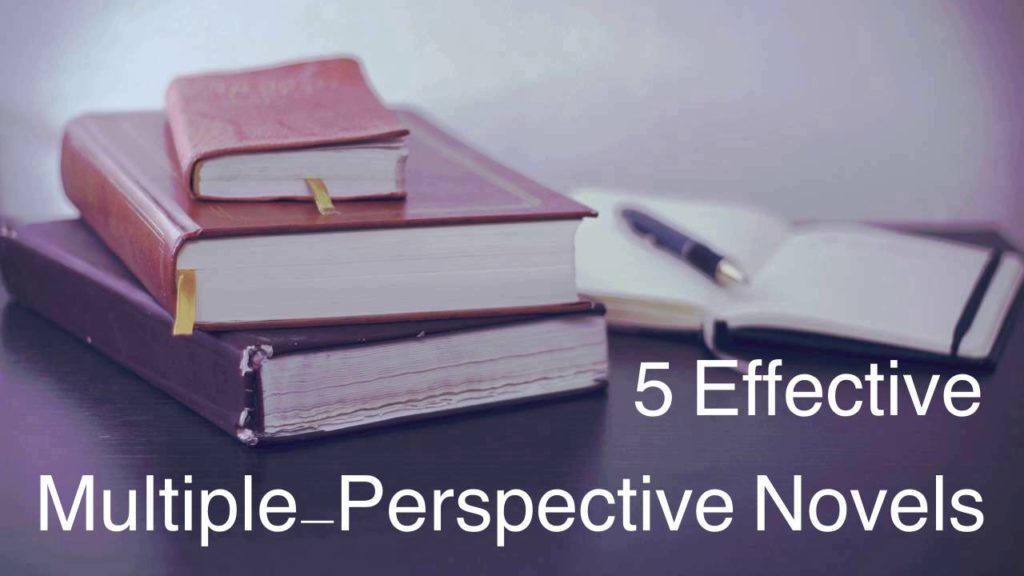“There are many reasons I love novels with multiple narratives. In novels where the events are filtered through the consciousness of a single ‘reliable’ narrator, I often wonder; is this the whole story? What could be missing here? Truth is often a multiplicity of perspectives, and sometimes the more viewpoints and versions of events there are, the closer the reader gets to an overarching truth. I like the element of mystery these books can sometimes involve, the way the cogs in the reader’s brain have to grind to figure out connections between the various narrative threads.”
— Susan Barker
The use of multiple narrators has become common in contemporary literature.
Many crime novels and mysteries present the story of both the detective pursuing the bad guy and the bad guy trying to evade capture. The shifting between the two points of view cranks up the suspense as readers see both characters trying to outwit each other. Many psychological thrillers also employ multiple point-of-view characters to demonstrate why everybody does what they do.
The use of multiple points of view reflects the fact that there are as many sides to every story as there are participants in the events. Novels that present several points of view show readers how individual characters perceive the significance of events differently and how the various characters interact with each other.
The acknowledgement that people often interpret the same events in vastly different ways is one of the elements I find most fascinating in the Life Stories in Literature approach to understanding fiction.
Here are some novels that demonstrate how an author uses multiple viewpoints to get at the whole story and to create suspense and empathy along the say.
An Instance of the Fingerpost by Iain Pears
Pears, Iain. An Instance of the Fingerpost
Riverhead, 1998
Hardcover, 691 pages
ISBN 978-1-573-22082-8
Recommended
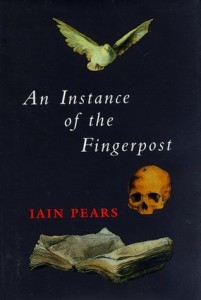
This book, which I read back in 2002, is the first novel I remember consciously reading as the compilation of four different characters’ versions of the same event. Set in Oxford in the 1660s, the story centers on a murder and the woman accused of it. Here’s how the story unfolds:
Four witnesses describe the events surrounding his death: Marco da Cola, a Venetian Catholic intent on claiming credit for the invention of blood transfusion; Jack Prescott, the son of a supposed traitor to the Royalist cause, determined to vindicate his father; John Wallis, chief cryptographer to both Cromwell and Charles II, a mathematician, theologian and master spy; and Anthony Wood, the famous Oxford antiquary.
Now that I’ve had 20 years to study storytelling involving several points of view, I need to put this Big Book on my list of novels to be reread.
The Good Girl by Mary Kubica
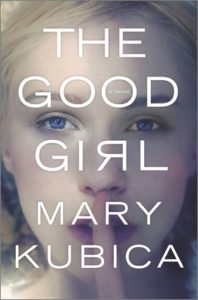
Kubica, Mary. The Good Girl
Mira, 2014
Hardcover, 352 pages
ISBN 978-0-778-31655-8
Recommended
Mia Dennett, in her early 20s, is the daughter of a prominent but domineering and demanding judge and his socialite wife. Mia is a well-liked art teacher at an alternative school in Chicago. Her parents can’t understand why she chooses to live in the city instead of in their large house in a much safer suburban neighborhood.
Mia’s mother receives a phone call one Monday morning when her usually reliable daughter fails to turn up at work. After she reports her daughter missing, the narration shifts among three point-of-view characters:
- Eve, Mia’s mother, who receives a phone call when Mia fails to show up for work one Monday morning
- Gabe Hoffman, the detective in charge of the police investigation
- Colin, the young man with whom Mia left a bar in the city over the weekend
As the story unfolds, we learn more about each character’s background and build a composite picture of what life in the Dennett family is like.
Thirteen by Steve Cavanagh
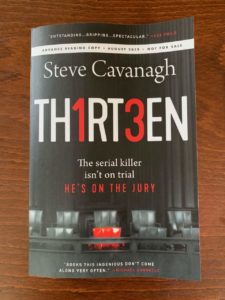
Cavanagh, Steve. Thirteen
Orion, 2018
Paperback, 356 pages
ISBN 978-1-409-17067-9
Recommended
The book opens with a prologue that introduces the reader to Joshua Kane, a psychopath who enjoys killing and does it well. Kane has been sleeping on the street, pretending to be homeless, so he can obtain the names and addresses of people summoned for jury duty.
Six weeks later, we meet Eddie Flynn, a former con artist who is now a defense attorney. Hollywood star Robert Soloman has been charged with the brutal murder of his beautiful wife, and Soloman’s legal representatives want Flynn on their team.
So begins the thriller trope of the cat-and-mouse game as someone (Flynn) searches for a villain (Kane). Will Flynn be able to identify and thwart the villain before the highly intelligent and incredibly resourceful Kane manages to complete his planned escapade?
The novel alternates first-person narration by Eddie and third-person narration about Kane as complication after complication ratchets up the suspense. Many suspense novels employ this narrative approach, but Cavanagh spices up the narrative by showing us how Flynn, the former con man, and Kane use some of the same methods in the pursuit of their desired outcome.
Cavanagh also offers a wide cast of supporting characters with quirky personalities to keep readers interested. Although I wondered a couple of times whether certain courtroom procedures and investigative methods would be allowed in the real law-and-order world, Thirteen kept me eagerly turning the pages until the very end.
Lady in the Lake by Laura Lippman
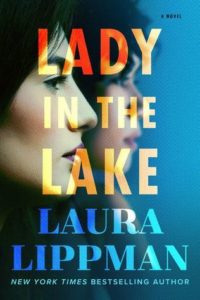
Lippman, Laura. Lady in the Lake
William Morrow, 2019
Hardcover, 340 pages
ISBN 978-0-062-39001-1
Highly Recommended
Set in Baltimore in the 1960s, this novel features Madeline “Maddie” Schwartz, a middle-aged woman, married for 18 years, with a 16-year-old son. But the restlessness of the times has caught up with her, and she leaves her husband and son in search of a more passionate and meaningful life. She finds work at the city’s afternoon newspaper, the Star.
Schwartz finds the story that she’s sure will make her name when the body of a young Black woman, Cleo Sherwood, turns up in the fountain of a lake in a city park. Sherwood was reported missing earlier in the year, but her body isn’t discovered until the ice melts. Given the time and place, no one is much interested in the unexplained death of a Black woman. So Schwartz begins investigating on her own, determined to find and write Sherwoods’s story.
Maddie’s investigation brings her into contact with people that used to be on the periphery of her life—a jewelry store clerk, a waitress, a rising star on the Baltimore Orioles, a patrol cop, a hardened female reporter, a lonely man in a movie theater. But for all her ambition and drive, Maddie often fails to see the people right in front of her. Her inability to look beyond her own needs will lead to tragedy and turmoil for all sorts of people . . .
The ghost of Cleo Sherwood oversees the novel. And as Schwartz interviews various people who might have known Sherwood, these people all tell the stories of their own experiences. The use of so many narrators contributes to the complex richness of this historical novel, as their varied viewpoints create a full picture of life in Baltimore in the 1960s.
Miracle Creek by Angie Kim
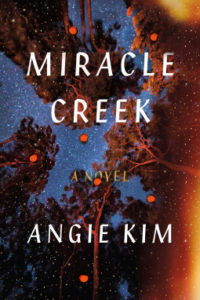
Kim, Angie. Miracle Creek
Macmillan Audio, 2019
Narrated by Jennifer Lim
Highly Recommended
My husband asked me to lie. Not a big lie. He probably didn’t even consider it a lie, and neither did I, at first….
In rural Virginia, Young and Pak Yoo run an experimental medical treatment device known as the Miracle Submarine – a pressurized oxygen chamber that patients enter for therapeutic “dives” with the hopes of curing issues like autism or infertility. But when the Miracle Submarine mysteriously explodes, killing two people, a dramatic murder trial upends the Yoos’ small community.
Who or what caused the explosion? Was it the mother of one of the patients, who claimed to be sick that day but was smoking down by the creek? Or was it Young and Pak themselves, hoping to cash in on a big insurance payment and send their daughter to college?
The ensuing trial uncovers unimaginable secrets from that night – trysts in the woods, mysterious notes, child-abuse charges – as well as tense rivalries and alliances among a group of people driven to extraordinary degrees of desperation and sacrifice.
On the surface, this is a mystery with several suspects. The novel unfolds through the stories of seven characters over a four-day trial.
But the primary focus is on three characters, Young and Pak Yoo and their teenage daughter, Mary, immigrants from Korea. Gradually we learn their perceptions of their own lives. Pak stayed behind in Korea to earn the money necessary to allow the family to relocate and start a business in the U.S. He arranged a job for his wife to work in a Korean-American family’s neighborhood store, then sent his wife and daughter on ahead.
Once in the U.S., the mother, Young, discovered that her job was to work in the store from 6:00 A.M. until midnight, 7 days a week. Young and Mary had a room in the house of the couple who own the store, but the owners spend much of their time traveling. With only 6 hours available for sleep, Young began sleeping on a mattress in the back of the store.
Meanwhile, Mary, left on her own, struggled to learn enough English to interact with students at her school. But mostly she missed her parents, especially her mother, who back in Korea had lovingly packed Mary a delicious school lunch every day.
After Pak arrives in the U.S., we hear a bit about the family’s experiences as immigrants. Telling details—such as “Pak Yoo was a different person in English than in Korean”—let us know how they are treated.
Learning how the three members of the Yoo family view their individual experiences is a heart-breaking yet enlightening process. Demonstrating how much this family sacrifices for the chance to make a better life for themselves in the U.S. makes this one of the most honest novels I’ve read in a long time, and that honesty comes from the author’s use of multiple points of view.
The audiobook ends with a short interview with Angie Kim. She explains what it was like for her to arrive in the U.S. as a child with no knowledge of English. Hearing her tell her own story made my heart break even more for poor fictional Mary Yoo.
Reference Notes
Multiple Narrators, Multiple Truths: A Reading List
© 2022 by Mary Daniels Brown

